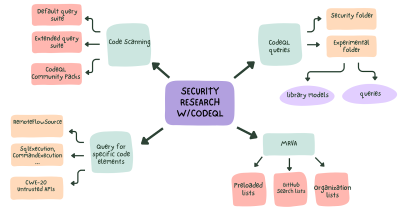
CodeQL zero to hero part 3: Security research with CodeQL
Learn how to use CodeQL for security research and improve your security research workflow.
Dedicated to advancing the understanding and detection of software vulnerabilities—and explaining the latest vulnerability research from the GitHub Security Lab. Go behind the scenes with the GitHub Security Lab, a collaborative initiative that brings together security researchers, developers, and organizations to find and fix security vulnerabilities in open source software.

Learn how to use CodeQL for security research and improve your security research workflow.

This blog post is an in-depth walkthrough on how we perform security research leveraging GitHub features, including code scanning, CodeQL, and Codespaces.

In this post, I’ll look at CVE-2023-6241, a vulnerability in the Arm Mali GPU that allows a malicious app to gain arbitrary kernel code execution and root on an Android phone. I’ll show how this vulnerability can be exploited even when Memory Tagging Extension (MTE), a powerful mitigation, is enabled on the device.

This blog post describes two linked vulnerabilities found in Frigate, an AI-powered security camera manager, that could have enabled an attacker to silently gain remote code execution.

Using CVE-2023-43641 as an example, I’ll explain how to develop an exploit for a memory corruption vulnerability on Linux. The exploit has to bypass several mitigations to achieve code execution.

Learn how researchers and security experts at GitHub, Microsoft, and Santander came together to address the challenges presented by the post-quantum cryptography world.

The GitHub Security Lab examined the most popular open source software running on our home labs, with the aim of enhancing its security. Here’s what we found and what you can do to better protect your own smart home.

We’re excited to highlight another top contributing researcher to GitHub’s Bug Bounty Program—@Ammar Askar!

In this post, I’ll exploit CVE-2023-4069, a type confusion in Chrome that allows remote code execution (RCE) in the renderer sandbox of Chrome by a single visit to a malicious site.

CVE-2023-43641 is a vulnerability in libcue, which can lead to code execution by downloading a file on GNOME.

For this year’s Cybersecurity Awareness Month, the GitHub bug bounty team is excited to feature another spotlight on a talented security researcher who participates in the GitHub Security Bug Bounty Program—@inspector-ambitious!

In this post, I’ll exploit CVE-2023-3420, a type confusion in Chrome that allows remote code execution (RCE) in the renderer sandbox of Chrome by a single visit to a malicious site.

The GitHub Security Lab audits open source projects for security vulnerabilities and helps maintainers fix them. Recently, we passed the milestone of 500 CVEs disclosed. Let’s take a trip down memory lane with a review of some noteworthy CVEs!

Learn how GitHub’s CodeQL leveraged AI modeling and multi-repository variant analysis to discover a new CVE in Gradle.

In this post, we’ll deep dive into some interesting attacks on mTLS authentication. We’ll have a look at implementation vulnerabilities and how developers can make their mTLS systems vulnerable to user impersonation, privilege escalation, and information leakages.
Build what’s next on GitHub, the place for anyone from anywhere to build anything.
Last chance: Save $700 on your IRL pass to Universe and join us on Oct. 28-29 in San Francisco.